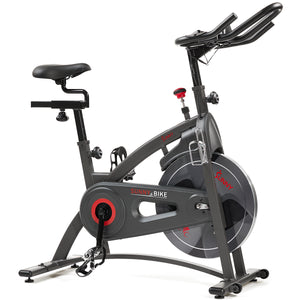It’s a huge accomplishment to start any exercise program. But learning how to boost exercise performance can improve the effectiveness of your workout, compared to just showing up and going through the motions.
It can be particularly important to monitor specific variables in order to track your progress or determine if you are working out effectively. While there are several exercise variables that can be used to track performance—including watts, distance, gears, speed, calories burned, and pulse rate—this article will expand on three important variables you should be tracking: Intensity, time, and cadence.
Intensity
When you are participating in aerobic activity such as cycling, your exercise intensity correlates with how hard the activity feels for you. Depending on what your goals are for your cycling workout program, intensity will determine what outcome you can expect from each workout. If you want to increase general health with modest calorie burning, then a lower intensity workout would suffice. But, if you want to increase your power, speed, and endurance, then higher intensities will be required.
You can measure intensity in one of two ways. First, you can gauge your level of perceived exertion, or how hard the activity feels to you. The second, is by measuring your heart rate. If your breathing is heavy and you are sweating profusely, odds are your exercise intensity is high and so is your heart rate. If you can hold a conversation but feel like your warming up or starting to perspire, then your intensity level is likely lower with only a slightly elevated heart rate.
Time
Just like with intensity the amount of time that you exercise will change the outcome of your workout. If your goal is to lose weight by burning many calories during your weekly program, you likely won’t see improvement with three 5-minute bouts of cycling.
According to the American College of Sports Medicine the recommended amount of physical activity you need to complete to lose weight is between 60-90 minutes of moderate or intense exercise five to six days per week. In order to reach your weight loss goal, you’ll have to increase both exercise intensity and time.
Cadence
One of the most important factors when cycling is how fast you rotate the pedals. These rotations are measured as cadence and RPM (revolutions per minute). The two terms are often interchanged. Both measurements count the number of times you can complete a full revolution of the cycling pedals every minute.
In recreational cycling activities, you might ride around a cadence of 60. Professional cyclists, on the other hand, can increase their cadence to 100 or more during competition. Monitoring cadence is primarily used as a performance marker and is a vital parameter for training. Finding the right pedaling rate is critical for minimizing energy expenditure and maximize efficiency during your rides. If you have purchased an exercise bike with the goal of training for an upcoming competition, make sure it comes equipped with a cadence monitor.
Check out some of our cycle bikes that come equipped with monitors that can track these critical training variables.



























Add Your Name & Email
Please enter your name and email to continue.We won’t display your email publicly.